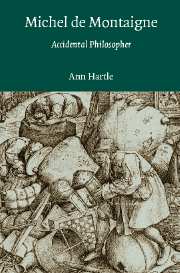Book contents
- Frontmatter
- Contents
- Acknowledgments
- Note on the Texts
- Introduction
- PART I A NEW FIGURE
- PART II ACCIDENTAL PHILOSOPHY
- 4 The Circular Dialectic of Self-Knowledge
- 5 “What It Means to Believe”
- 6 The Latent Metaphysics of Accidental Philosophy
- PART III THE CHARACTER OF THE ACCIDENTAL PHILOSOPHER
- Notes
- Works Cited
- Index
5 - “What It Means to Believe”
Published online by Cambridge University Press: 23 July 2009
- Frontmatter
- Contents
- Acknowledgments
- Note on the Texts
- Introduction
- PART I A NEW FIGURE
- PART II ACCIDENTAL PHILOSOPHY
- 4 The Circular Dialectic of Self-Knowledge
- 5 “What It Means to Believe”
- 6 The Latent Metaphysics of Accidental Philosophy
- PART III THE CHARACTER OF THE ACCIDENTAL PHILOSOPHER
- Notes
- Works Cited
- Index
Summary
Isak Dinesen's story “Babette's Feast” is set in a nineteenth-century Norwegian village that is home to a small sect of very pious, God-fearing, and righteous Lutherans who are admired throughout Norway for their renunciation of the pleasures of this world. Since the death of their founder, dissension and discord have arisen in the community, and while the atmosphere of their life together remains austere and devout, it has become rather grim and joyless. Then Babette comes to town to cook for two elderly sisters who are the founder's daughters. And when the community decides to celebrate the hundredth birthday of their deceased founder, Babette takes all the money she has and plans a feast. Suddenly all kinds of wonderful things begin to arrive from France – fragrant and foreign things like spices and wines and even a live turtle. Sauces are prepared and aromas fill the air. The whole community is caught up in watching the preparations and warning themselves about the temptations of the senses. But at the feast, the wine flows freely, and, as the old animosities are forgotten, the stern faces open up and there is laughter and joy and affection. Surely, before this, they had loved each other as God commands. This laughter, joy, and affection must simply be the wine. Or so “the naturalist” would say.
- Type
- Chapter
- Information
- Michel de MontaigneAccidental Philosopher, pp. 121 - 148Publisher: Cambridge University PressPrint publication year: 2003

